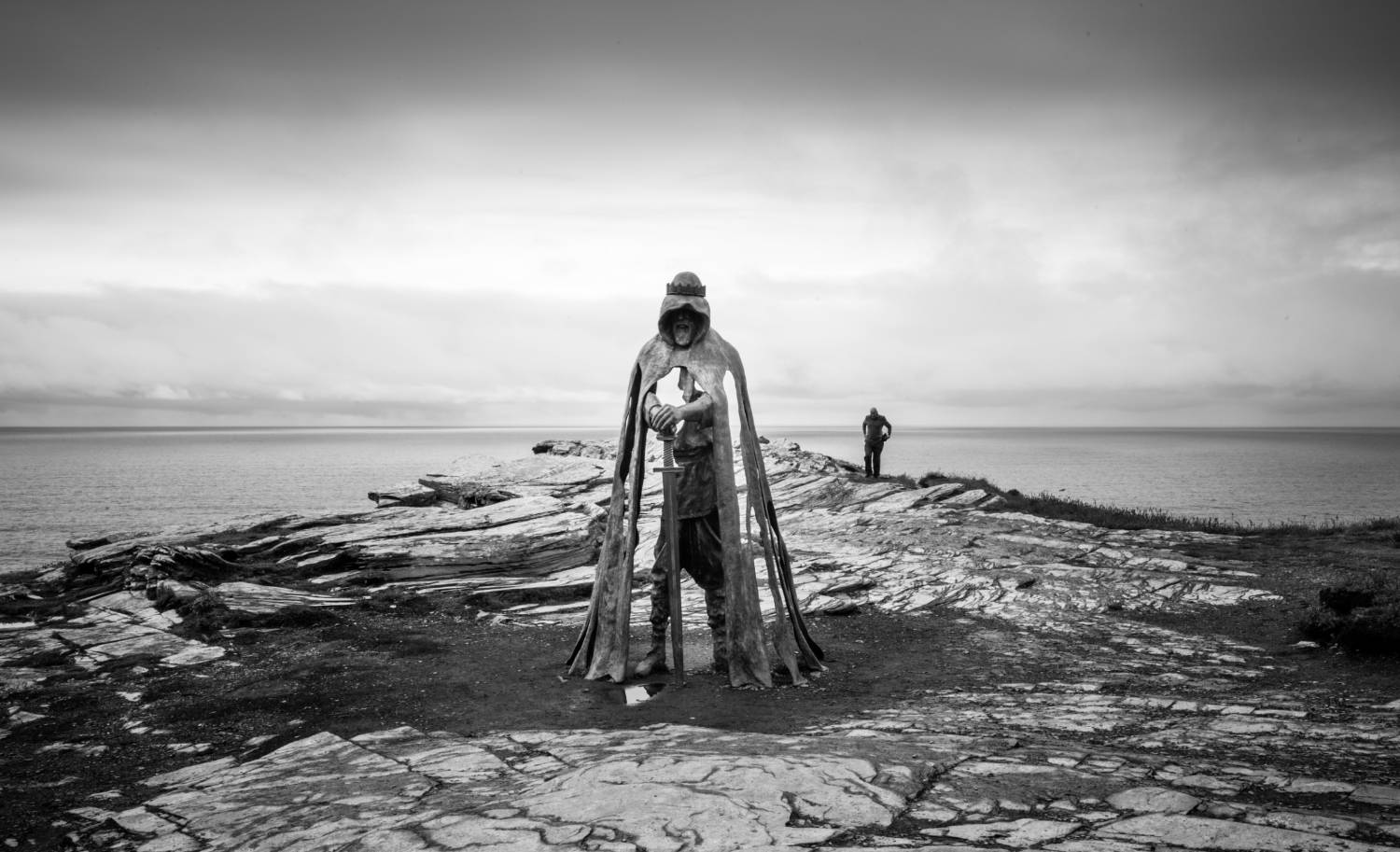
This is the third of an ongoing series of annual fine art books created, designed and produced by UVU’s Art and Design Department. We did not aspire to rewrite Arthurian history and its cultural meanings. Our quest was imbued with the hope that we could shine a light on the myth’s origins, and its landscapes and legacies.

Travis Lovell

Sherry Ward

David Christensen
Knights worthy of a seat at King Arthur’s Round Table defined themselves by their quests. The quest for the Holy Grail remains the loftiest of them all. In the centuries since Arthur’s time, the Grail has epitomized the human yearning for noble purpose and adventure. Sometimes a bowl, sometimes a cup – sometimes even a personage or a stone – the Grail’s various forms invariably represent a mystical source of power. Sir Thomas Malory’s Le Morte D’Arthur portrays the Grail’s power as subtle and rudimentary, yet irresistibly alluring. Malory presents the Grail to Arthur and his knights, and it yields the tantalizing aromas of delicious foods, prompting the men to perceive themselves also as beautiful and enticing. But the Grail is a tease: it vanishes as quickly as it manifests, leaving the knights in a state of desire.
Gawain is the first to take up the quest for the Grail, but others follow suit. Their adventures thread the myth cycle with desire, pursuit, sometimes despair, and occasional joy and contentment.
In medieval Christianity, the knights’ quest for the Grail symbolized the hope of standing in the very presence of God, encircled by transcendent visions. The knights’ sensations, while physical, signified spiritual values such as: growth, development, humility, discipline, and unity.
In May of 2017, we undertook an Arthurian quest of our own. Our quest yielded no magical cups, but after a month of close quarters it did generate certain dishevelments and odors. We did not aspire to discover some great secret, to obtain mystical power, or to rewrite Arthurian history and its cultural meanings. Even so, our quest was imbued with the hope that we could shine a light on the myth’s origins, its landscapes and legacies, and its continuing impact. We certainly hoped to feel the “spiritual” sensations that characterized the ancient quest for a sacred past. The myth of King Arthur, for all the assertions and doubts surrounding its temporal authenticity, has left deep marks and meanings over a millennium of history and culture. The power of the Arthurian myth persuaded us, Utah Valley University students and professors, to travel halfway around the globe to walk where Arthur and his knights could have walked. The beloved story drew us to research, sketch, photograph, design, and write in a collective attempt to construct a portrait – not of the inaccessible man, but of the material myth.
The power of the Arthurian myth even today draws comparisons (and contrasts) between Arthur and contemporary leaders, among Camelot and modern nations. The myth yet energizes our popular culture, from cinema to casinos to flour to storage units. Arthur’s long reign over our imaginations illuminates Joseph Campbell’s timeless insight: “Myths [are] the stories we tell each other about what it means to be human.”
Campbell’s sentiment defined our quest. We sought to take in many of the visions and meanings of one of the world’s pre-eminent myths. As we traveled, we discovered that each of us had bits and pieces of the story within us. Arthur’s story is ours: a complex tale of destiny, love, success, and betrayal. The myth of Arthur, if we’re willing to engage and strive to understand it, may grant us keys to understanding ourselves. Campbell lays his blessing on the endeavor: “Myths are clues to the spiritual potentialities of the human life.”
We invite you to join us on our quest. In the pages of this book, may you discover yourself as you discover Arthur: page to page, image to image, story to story. In doing so, we hope you will, as we did, grow with every word, learn with every brushstroke, and stoke the fire of myth with every photograph.
—Travis Lovell, Chair, Department of Art & Design